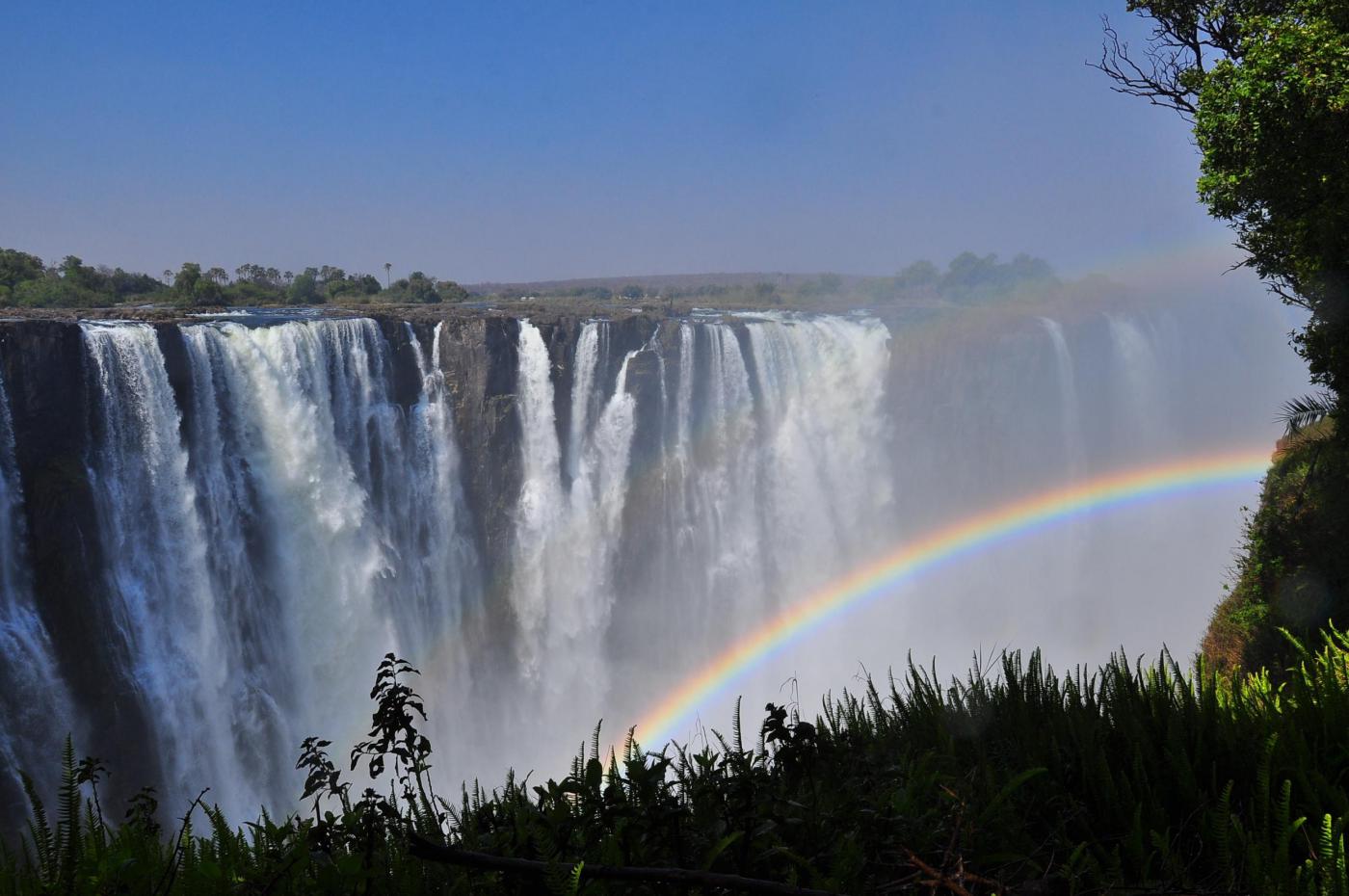The Symphony of Nature: Victoria Falls
Nestled between Zambia and Zimbabwe, the ethereal Victoria Falls serves as one of nature’s most stunning masterpieces. This isn’t just a waterfall; it’s a symphonic blend of sight, sound, and sheer power that underscores the artistry of our planet.
Origins of a Name
The indigenous Lozi language christened it “Mosi-oa-Tunya,” poetically translated as “The Smoke that Thunders.” The imagery evoked by this name is profound: not merely water cascading down, but a force so potent that it conjures visions of billowing smoke and resonating thunder. While it was the explorer David Livingstone who, in 1855, would name it after the British monarch Queen Victoria, its soul is unmistakably African.
A Feast for the Senses
Imagine a curtain of water, over a mile wide, plummeting with a deafening roar into a chasm below, only to be transformed into a misty spray that nourishes the lush rainforests surrounding it. When the sun dances through the droplets, rainbows arc gracefully across the sky, their hues brilliantly contrasting against the backdrop of the cerulean African sky.
The sight is spellbinding, but to stand on the Knife-edge Bridge or at the Devil’s Pool, with the cool mist caressing your skin, is to experience the Falls in its full multisensory splendor. The gush of water is almost rhythmic, a drumbeat set by the heartbeat of the Earth, punctuating the ambient sounds of exotic birds, distant wildlife, and the rustling of trees.
Ecology’s Eden
Victoria Falls is not just an aesthetic marvel but also an ecological powerhouse. The rainforest that surrounds the falls, drenched and sustained by its continuous spray, hosts a remarkable diversity of plant species. Many of these flora are rare and unique to this micro-ecosystem. As you traverse the pathways, ferns, palms, and liana vines skirt your journey, and overhead, ebony trees and date palms form verdant canopies.
It’s not just the flora that captivates. A cacophony of avian serenades accompanies visitors, thanks to birds like the Trumpeter Hornbill, African finfoot, and the Peregrine Falcon. If you’re fortunate, you might even spot the shy bushbuck or the playful vervet monkeys threading their way through the trees or coming to quench their thirst.
Bridging Two Nations
A stone’s throw from the cascading water is the Victoria Falls Bridge, an architectural marvel that connects Zambia and Zimbabwe. Completed in 1905, this bridge stands as a testament not just to human engineering but to unity. Every day, residents, tourists, and adventurers traverse this iconic bridge, blurring the lines of borders and reminding us of the interconnectedness of our shared world.
Embracing Adventure
For the intrepid, Victoria Falls isn’t just a visual treat; it’s an adventurer’s playground. White-water rafting on the Zambezi River challenges even seasoned thrill-seekers, with rapids that have evocative names like “The Terminator” and “Oblivion.” Bungee jumping off the Victoria Falls Bridge offers a unique perspective of the falls – albeit briefly, in a heart-stopping dive.
For those seeking a less adrenaline-filled experience, a tranquil boat ride at sunset on the Zambezi River offers a different tempo, where one can sip on a refreshing drink and watch as the sun paints the sky in hues of gold, orange, and deep crimson.
Conservation and Legacy
Amidst its grandeur, Victoria Falls also serves as a poignant reminder of the need for conservation. With changing global climates and potential threats from development, ensuring the falls remain as Livingstone first saw them is a task for both local communities and global stakeholders. The designation of Victoria Falls as a UNESCO World Heritage Site in 1989 underscores the international commitment to preserving its beauty and ecological significance for generations to come.
Victoria Falls, with its mighty roar and sublime beauty, isn’t just a natural wonder. It is a testament to the enduring dance between the elements, a symbol of unity across nations, and a clarion call for conservation. It whispers tales of history, thunders with adventures, and sings lullabies of unparalleled natural beauty. As with any masterpiece, words and pictures can only capture its essence. To truly understand its magic, one must stand on its precipice, feeling the mist and hearing the roar, as our planet unveils one of its most wondrous performances.

